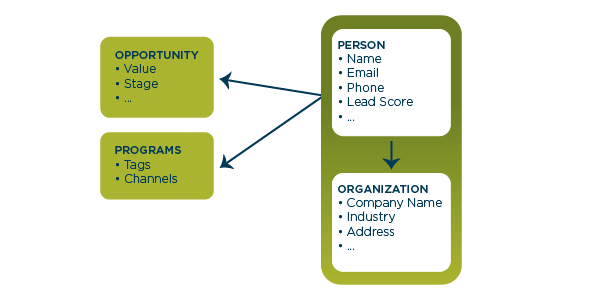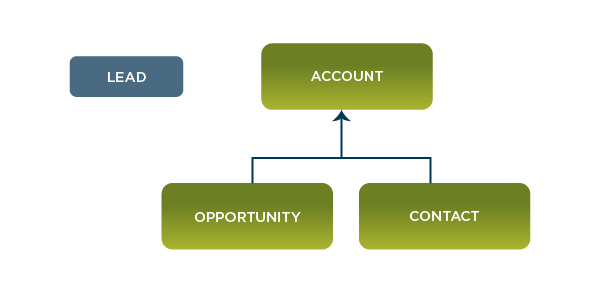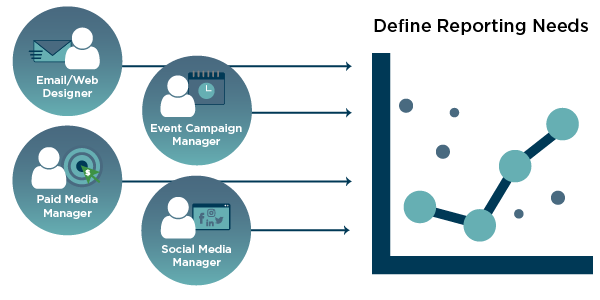Is your current Marketing Automation Platform (MAP) not meeting your needs? With a seemingly endless universe of MAP tools available to both B2B and B2C marketing teams, it can be difficult to evaluate which one is right for your organization. And once you do purchase an MAP tool, you may outgrow it very quickly depending on the growth of your company and the complexity of your technology stack as a whole. If you’re currently faced with the question of whether or not you need an upgrade, or simply a change, the following considerations and tips can assist in your decision-making:
- MAP architecture capabilities and considerations
- Current tech stack integrations
- Ease of Use
- Current team roles and structure
- Reporting requirements for an MAP platform
- Campaign and program capabilities
Once you’ve settled on a new MAP platform and a migration is necessary, it’s helpful to know what you can do to prepare. PS: We’ve included 6 steps at the end of this post to assist you with that preparation and process.
1. MAP Architecture Capabilities and Considerations
First and most importantly, you need to ensure the MAP solutions you’re shopping have either the necessary native integrations, or at least the capability to integrate non-natively if needed. If we start with the most standard stack, you’ll need a solution that integrates with your CRM. Most B2B companies use Salesforce, and the good news is: most MAP systems natively integrate with Salesforce.
At a basic level, all MAP systems are structured with the following (terminology may differ slightly between systems):
- A Lead/Contact object
- An Account object
- An Opportunity object
- A Campaign object
This is all you need for a standard CRM setup. But if your Marketing team relies on other CRM object data, such as custom objects, don’t assume all MAP systems (even if they natively integrate) can accommodate this. This is not an area where you want to skimp on questions, and you want to ensure you have the right people in the room for these discussions.
MAP Architecture

CRM Architecture
2. Current Tech Stack Integrations
Beyond your CRM, you probably have other tools you’d like your MAP system to integrate with, such as social platforms, webinar providers, event management tools, BI tools, etc. Not all MAP ecosystems are created equal, and it is, again, important to ask what other tools integrate natively and note if there is anything non-standard about the setup of other tools you use.
Keep in mind, you may not always be able to rely on native integrations. Maybe this is because one is simply not offered, or because you’re using a tool in a non-standard way, and so the native integration won’t meet your needs even if it exists. You’ll likely need to do some research yourself in this case, since you won’t be able to solely rely on solution consulting teams to have all the answers. If you cannot take advantage of a native integration, the most important questions to ask are: what APIs are available, and at what extra cost (if any). From there, keep in mind that there may be middleware or partner offerings available, which can oftentimes save time.
3. Ease of Use
Beyond your data and integrations, you’ll obviously be curious about the ease of use and capabilities within the MAP tool you’re shopping. One thing to keep in mind: the more capabilities a tool has, the more robust the initial setup and training will be. During these discussions, you need to not only make sure the system accommodates your immediate marketing initiatives, but also your future ones. The last thing you want to do is invest time, money, and people to launch a marketing automation platform all to replace it in a year or two because you outgrow it. I stress this because we see this all the time at Etumos.
4. Current Team Roles and Structure
Does your email/web designer have HTML and CSS skills? Do you have a dedicated campaign manager? Do you have a separate team managing marketing channels, such as events, webinars, and paid media? What are your reporting needs, and who is looking at them?
Many MAP tools market their email editors as easy to use, no HTML/CSS experience required. I’ve found almost all clients end up needing help with HTML/CSS if they do not have an internal resource. This is especially true when faced with a migration because you’ll likely have templates from an existing system that you wish to migrate. That process is almost never as seamless as copying and pasting HTML from one system to another. So, unless you plan to start from scratch with new templates, make sure you have an HTML/CSS expert on-hand, even if it’s temporary.

Facing a team restructure? Read our article, “Defining Marketing Operations as Marketing Technology Evolves” to consider our 4 Pillars of Marketing Operations.
5. Reporting Requirements for a Marketing Automation Platform
Reporting requirements should also direct a large part of these pre-sales discussions. What reports do you have now that you need to be able to replicate? What reports are on your wish list that you previously haven’t been able to compile? Be very thorough in your discussions around what data you need to report on. Most platforms have multiple tiers of reporting capability, meaning the more you spend, the more you get. However, more advanced MAP systems have reports similar to CRM revenue reporting (specifically CRM reports that pull from a campaign or opportunity object), so be careful not to pay for duplicate capabilities if you’re on a tight budget.
All in all, there is no good way to migrate reports. You will have to rebuild all reports in a migration process. Be sure to proceed through your setup following best practices to ensure your reporting capabilities are useable.
6. Campaign and Program Capabilities
Lastly, your longest discussion will likely be around program/campaign capabilities, and for good reason! Obviously, you need to feel confident that your new system will meet your current marketing and operational program needs. It’s helpful to go into these discussions with a list of your current programs, and for any complex programs (such as nurtures, lead processing, etc.), a documented workflow you can walk through.
This should not only include what segmentations you need to pull, and the logic that a lead should flow through, but also timing requirements, internal notifications based on lead actions, dynamic content you want to include in emails, etc. Having a rough estimate of how many trigger-based versus batched programs you’re running is also useful for processing reasons. It’s also worth asking if the platform(s) you’re shopping come with any program templates.
These often are not totally plug-and-play–they will require customization–but it is still a huge time-saver, and often helps prevent human error during the build process.

Learn more about Lifecycle Processing and Architecture Best Practices.
6 Steps to Prepare for Your Marketing Automation Migration
We reviewed the largest topics to cover with pre-sales. Now, what can you do to start prepping for your migration?
- Identify and set your MAP tool cut-over date – This should be well in advance of your current system’s sunset date (and it should go without saying, make sure you know what the sunset date is). Ideally, you’d migrate at a time of year that makes sense for your organization and team (i.e., no one is on extended leave or holiday; the migration does not put major internal events at risk – conferences, sales kickoffs, etc.).
- Create a project plan – This should include assigned tasks for your team, due dates, and a streamlined process to enforce those due dates.
- Consider your migration assistance options – Budget for either independent agency or professional services assistance. Migrations are extremely complex and there is an order of operations that must be followed, it’s worth spending the money on a resource who has lead migrations before and likely already has this process outlined.
- Audit and document your current setup – Start documenting all assets, programs, lists and reports to migrate, de-prioritize those that are a wish list or something you would like to improve throughout the migrations.
- Typical medium priorities include:
- Marketing programs (form, email, nurture, event programs)
- Segmentations or database target and exclusion smart lists
- Dynamic list building
- Reporting
- Typical top priorities include:
- Technical setup
- CRM integration and other integrations
- Data list uploads that won’t originate from the CRM sync
- Operational programs
- Email and landing page assets
- Typical medium priorities include:
- Minimize lost data – No matter how robust your migration team is – whether you hire a consultant or do it yourself – you will always lose some data in a migration, always. However, there are relatively easy ways to maintain some historical information: Pull dynamic lists in your current system of specific actions a lead took that you want to “remember.” For example, pull a list of leads who attended a webinar in the last 6 months that you want to retarget. You can populate those prospects into a similar static list in your new system to retarget. If your current system is able to push MAP program/campaign data to CRM campaigns, and your new system can do the same, then do a retroactive push of program/campaign data to CRM campaigns. Then once your new system is synced with your CRM, simply pull that data down from the campaign object.
- Begin educating you and your team – If you are unfamiliar with the new system, start learning as soon as possible! Whether that’s paid self-training, consulting training, online training, YouTube videos, etc., you won’t be doing yourself or your team any favors by procrastinating during this process. Last but certainly not least, most marketing teams end up having to change marketing automation platforms at some point. It’s not as difficult as it all sounds, but there will always be something you didn’t realize you’d lose in the process. Either way, it’s not the end of the world and you’ll likely be better off after an informed change. Migrations provide the opportunity to learn, improve, and refresh. Embrace that opportunity!







